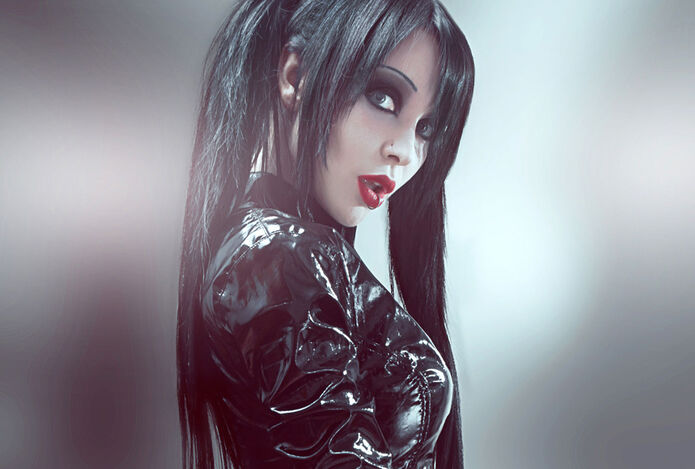The influence of Asian subcultures and clothing styles is visible everywhere in the black scene. The younger generations are adopting parts of Japanese subcultures for their dark outfits, setting trends within the goth scene.
Asia produces its very own subcultures, all of which are related to manga and anime culture and have numerous style blossoms, especially in Japan. Time and again, the Japanese turn out to be true artists when it comes to combining clothing trends from subcultures with their own culture. The symbiosis with the black scene has given rise to visually distinct subcultures such as Visual Kei or Gothic Lolita.
Young people's everyday lives in Japan are highly uniformed, with school uniforms prescribed at most schools and universities. The need for striking style then seems to discharge all the more violently in their free time.
Cosplay, for example, is about imitating role models from manga, anime, film or video games and representing them as accurately as possible. One elaborately reproduces outfits, weapons or accessories to match one's preferred and drawn counterpart. A trend that was quickly exported to the USA and Europe, where it is now expressed in huge conventions. Events such as Comic Con in San Diego, USA, serve as performance shows of one's dressing-up skills. The results may be described as breathtaking.
Visual Kei is the name given to the imitation of artists on stage, performing mainly J-pop and J-rock music genres, and always dressed flamboyantly. In the early 80s, some Japanese musicians started interpreting the visual trends that were circulating in Europe instead of bluntly copying them. The band "X" is said to have been the first to play on stage in a patchwork outfit that "irreverently" made use of all kinds of trends from subcultural scenes. So in the beginning they mixed New Romantic, Gothic and Glamrock in their own outfits on stage to resemble western idols like David Bowie or Twisted Sister. Visage, Siouxsie & The Banshees and Alien Sex Fiend were also used as templates to create a style all their own.
This was then picked up by the fans, who then tried to match their idols on stage. The resulting clothing styles and mixed cultures can only be found in the Japanese scene. Visual Kei is - despite some external overlaps - not related to the Gothic scene. J-pop and J-rock bands also became known in Europe via the internet. Visual Kei reaches Germany, where the followers are called Visus or Visuals.
But the Japanese scene has much more to offer. Gothic Lolitas, for example, look like elegant and fragile porcelain dolls from the windowsill and represent a kind of counterculture in Japan to the gyaru, who show themselves very revealing and lascivious. Large voluminous skirts are often printed with motifs from fairy tales, colourful patterns, flowers or even animals. They are accompanied by ornate stockings, blouses trimmed with lace and platform shoes with clasps.
The aforementioned gyaru are over-sexualised and sometimes absurdly dressed girls. Short skirts, copious makeup, calf puffs with pumps and brightly coloured, huge wigs with skin that looks unnatural by our standards due to self-tanning. But these styles have not yet made it to Germany.
Musically, the Asian market hardly plays a role for goths.


